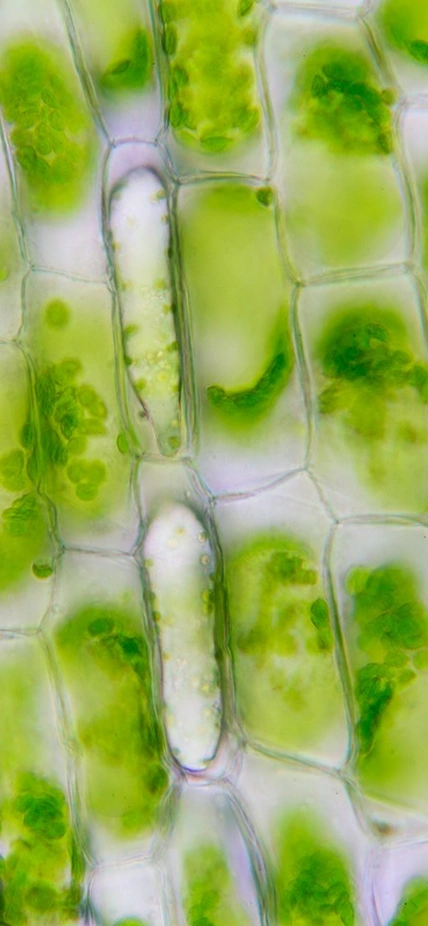Palo Alto, CA— Plant science will be crucial for solving many of society’s most-pressing challenges—including climate change, food security, and sustainable energy—but what are the outstanding mysteries that plant researchers need to solve to pave the way for this progress?
A new special-focus issue of Plant Physiology edited by Carnegie’s Sue Rhee, Julia Bailey-Serres of UC Riverside, Kenneth Birnbaum of NYU, and Marisa Otegui of the University of Wisconsin-Madison offers an overview how one initiative—the Plant Cell Atlas—is approaching these fundamental research inquiries and advancing the field.
The project started as a call-to-action from Rhee, Birnbaum, and Carnegie’s David Ehrhardt, who in 2019 published an essay in Trends in Plant Science asking the academic community to increase its investment in single-cell approaches in the plant sciences. It officially kicked off with a series of well-attended, highly collaborative workshops the following year, the publication of a roadmap in eLife in 2020, and outreach-oriented collaboration with three Historically Black Colleges and Universities.
“Climate change is going to put enormous pressure on the global population and a more comprehensive understanding of the connections between biochemistry, molecular biology, physiology, and functionality in plant cells will enable us to prepare to meet these disruptions head on,” said Birnbaum, the issue’s lead editor.
Plants sit at the nexus of several of the impending risks posed by global climate change.
Plants have a special power, called photosynthesis, which enables them to convert the Sun’s energy into chemical energy in the form of sugars and fats. This underpins our entire food supply, making plants’ ability to adapt to shifts in temperature and precipitation of critical interest for combating global hunger. Luckily, we have plenty to learn about survival from plants, several of which can live in the most extreme conditions, such as the summers in Death Valley.
Photosynthesis has also shaped our planet’s atmosphere—enabling life as we know it to arise and thrive on Earth—because its reactions take up carbon dioxide and release oxygen. This ability means that plants remove about a quarter of humanity’s carbon pollution from the atmosphere, making them good candidates for use in future carbon sequestration programs. Furthermore, plants can also play a role in climate change mitigation strategies by producing biofuels and reducing the use of oil and gas.
Fortunately, the biological sciences are in a period of extraordinary productivity underpinned by breakthroughs in single-cell sequencing, cryogenic electron microscopic imaging, and single-molecule tagging and imaging—which is resulting in an avalanche of data that can bring about a new, more-comprehensive understanding of cellular activity.
“Many of these new techniques haven’t been exploited in plant science yet, and by incorporating them into plant research, we are on the horizon of a major new understanding of basic questions in plant biology,” said Bailey-Serres.
Of particular interest to the Plant Cell Atlas members is a systems-level approach that would allow researchers to gain a comprehensive view of the various interactions with which an individual protein is involved and the locations within a cell where these processes occur.
“Think of a cell as an orchestra playing a symphony,” explained Rhee. “Right now, we can appreciate the music’s beauty and pick out small refrains or themes in the melody. But we want to get to the point where we can listen and then know how to write out the full score, including every instrument.”
To truly link not just a genetic sequence to the protein structure that it encodes—as scientists have been capable of doing for a generation now—but develop a comprehensive understanding the protein’s concentrations in the cell’s various compartments and the myriad signals and information-conveyance chains in which this protein participates, would drive a revolution in plant science.
The special issue comprises seven update articles and 10 research papers that use cutting-edge techniques to advance exciting areas of investigation in plant cell biology, including:
Plants have many different types of cells that are specialized to different tissues. How do they develop the properties of their cell walls that enable and enhance their specific properties?
During phases of growth and development, how do plant cells coordinate with each other to create functional organs?
How do plant cells respond to environmental rhythms, such as time of day, or to environmental constraints, such as drought?
“We are thrilled that Plant Physiology devoted an entire issue to the Plant Cell Atlas initiative,” said Otegui. “We believe that there is great urgency to advance this kind of coordinated, interdisciplinary, multi-institution effort if we want to make big strides toward answering fundamental questions about plant biology that have major implications for humankind.”
